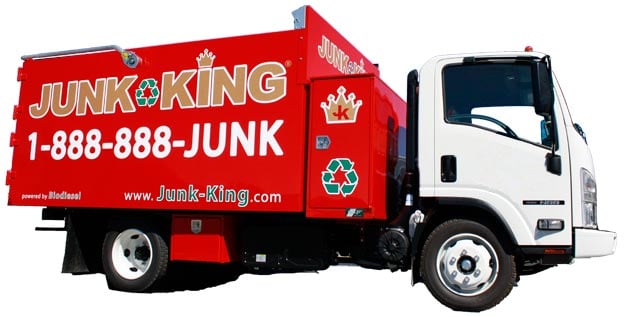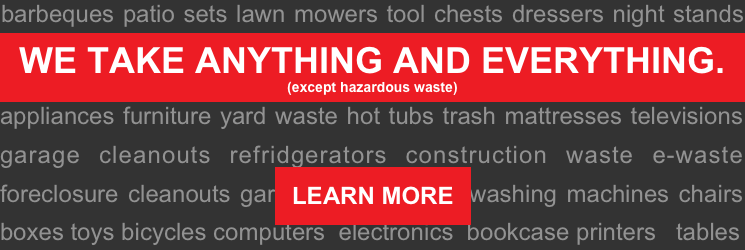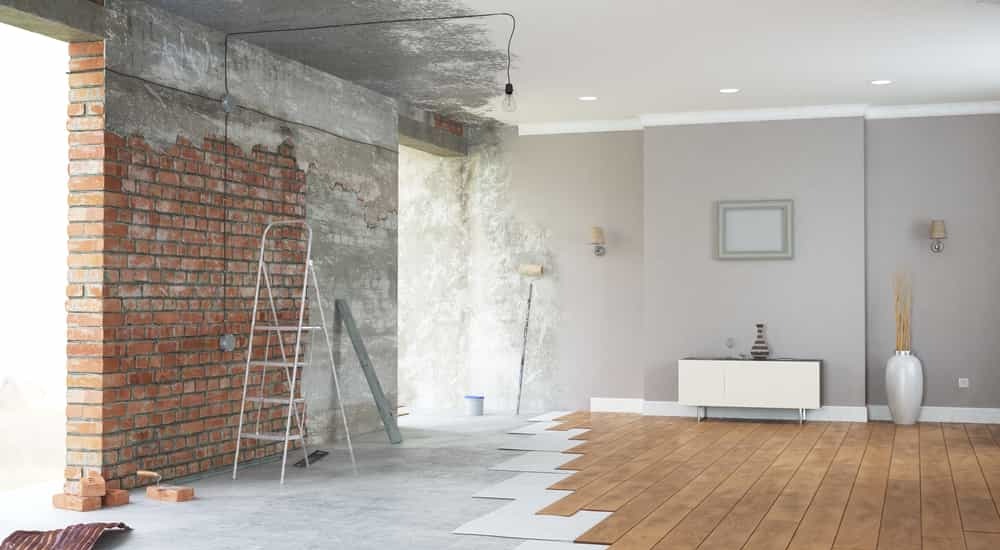
[This article was originally published in May 2017 and has been updated and revised.]
So you've made the decision to do that big home remodeling project. You've got the plans, bought the materials, and have the tools.
Hazardous Materials Can Appear to Be Harmless Waste
The sobering reality is that construction projects are known for the presence of "hazardous materials." Seemingly innocuous products actually contain elements and chemicals that are labeled as hazardous. Consequently, when the cut-offs, scrap pieces and debris from these materials are hauled off and disposed of, they then become "hazardous waste."
And this is true for every residential remodel, renovation, or major DIY project in a home.
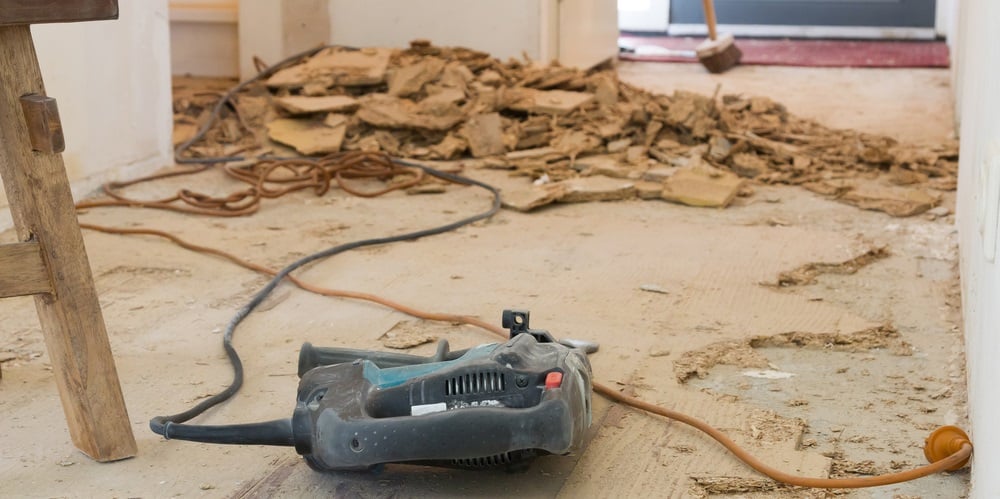
The "Hazardous Waste" of DIY Project Debris Disposal
Of course you want to minimize the presence of any hazardous materials or products on your project, but they cannot be completely avoided.
All construction waste is not the same. When it comes to waste removal, especially from a DIY renovation or building project, hazardous material has to be taken into consideration. And, while some substances and materials are more easily recognized as being hazardous, you might be surprised at what else is considered hazardous.
The fact is that debris from construction and demolition work often contains dangerous wastes. Local, state, and federal rules require this to be properly managed and disposed of. In addition to building material waste, other debris generated during a building project can include treated wood, paint and solvent wastes, glues and roofing tars, and a variety of other materials.
And all of this material, hazardous and otherwise, has to be removed, handled and disposed of properly and legally.
All construction projects commonly produce a wide variety of waste materials that must be removed and disposed of in accordance with hazardous waste disposal rules. And the list of common construction waste listed as hazardous wastes is quite long.
Some Common Construction Materials Considered that are Hazardous
The following list represents most of the more common materials that show up in various building projects.
Some of these items are considered “Universal Waste” by the state of California, which means they are materials that can be handled and disposed of differently than most other hazardous waste materials.
- Aerosol cans
- Asbestos-containing materials
- Empty containers or drums
- Lead-containing materials
- Mercury-containing light bulbs and lamps
- Mercury-containing switches and relays
- PCB-containing light ballasts
- Oil-based paint
- Sludge from various solvents
- Paint thinner
- Shop towels and rags contaminated with hazardous waste
- Sanding dust
- Treated wood
If your project is relatively small and your waste materials nominal, then certain conditions apply that may exempt you from the Universal Waste regulations in California. According to the California Department of Toxic Substances Control:
“A Conditionally Exempt Small Quantity Universal Waste Generator (CESQUWG) is a universal waste generator who produces less than 100 kilograms (220 pounds) of RCRA hazardous waste, including universal waste that is RCRA universal waste and less than 1 kilogram of acutely hazardous waste in a calendar month. (RCRA hazardous waste is hazardous waste that is regulated under the hazardous waste regulations adopted by the U.S. Environmental Protection Agency.)”
The best approach is to simply treat all construction waste and other types of industrial waste as potentially containing hazardous material.
Safely Managing Hazardous Waste from Your DIY Project
Home improvement projects can be both exciting and rewarding, but they often generate various types of waste, some of which can be hazardous to your health and the environment. Properly identifying and disposing of hazardous waste materials is crucial to ensure the safety of your household and the ecosystem.
It's important for homeowners who are engaged in completing DIY home improvement projects on how to identify and properly dispose of any hazardous waste materials.
Identifying Hazardous Waste
Before delving into disposal methods, it's important to identify what constitutes hazardous waste. Hazardous waste materials include substances that can pose a threat to human health or the environment. Some common examples of hazardous waste generated during home renovation projects are:
-
Paint and Solvents: Old paint cans, paint thinners, and other solvents often contain harmful chemicals and heavy metals that can be harmful if not disposed of properly.
-
Asbestos: If your home was built before the 1980s, it may contain asbestos in insulation or other building materials. Disturbing asbestos can release harmful fibers into the air.
-
Lead-Based Paint: Houses built before 1978 may have lead-based paint. Sanding or removing it can release lead dust, which is highly toxic, especially to children.
-
Electrical Waste: Old wiring, switches, and outlets may contain hazardous materials like mercury and should be handled with care.
-
Chemicals and Cleaning Products: Unused or expired cleaning products, pesticides, and other chemicals used in home maintenance can be hazardous.
Proper Disposal of Hazardous Waste
-
Research Local Regulations: Different areas have specific regulations governing the disposal of hazardous waste. Research the regulations in your locality to ensure you are in compliance. Contact your local waste management or environmental agency for guidance.
-
Use Authorized Collection Centers: Many municipalities have designated collection centers or events for hazardous waste disposal. They often accept items like paint, solvents, and chemicals. Check with your local government for collection schedules and locations.
-
Asbestos Abatement: If you suspect asbestos in your home, it's essential to hire a professional asbestos abatement contractor. Disturbing asbestos without proper training and equipment can be extremely hazardous.
-
Lead-Based Paint Removal: When dealing with lead-based paint, it's safest to consult a lead paint removal professional. They can safely encapsulate or remove lead-based paint, minimizing exposure to lead dust.
-
Electrical Waste: Electrical waste can be taken to electronic recycling centers. These centers are equipped to handle and recycle electronic components safely.
-
Chemicals and Cleaning Products: Contact your local household hazardous waste facility for guidance on disposing of chemicals and cleaning products. In some cases, you may be advised to use up or give away usable materials and drop off the rest.
-
Proper Labeling and Storage: While you're working on your home improvement project, it's crucial to store hazardous materials safely. Keep them in their original containers, clearly labeled. Store them in a secure, well-ventilated area away from children and pets.
Preventative Measures
While managing hazardous waste is essential, it's equally important to take preventative measures to reduce waste generation:
-
Buy Wisely: Purchase products with minimal hazardous components. Opt for low-VOC (volatile organic compounds) paint and environmentally friendly alternatives.
-
Recycle and Reuse: Whenever possible, reuse materials from your project or recycle items that are no longer needed. This not only reduces waste but also conserves resources.
-
Dispose of Hazardous Waste Immediately: Don't let hazardous waste accumulate in your home. Dispose of it as soon as possible to reduce the risk of accidents.
To sum it up, when you're undertaking DIY home improvement projects, being aware of hazardous waste materials and knowing how to properly dispose of them is essential for the safety of your household and the environment.
Always follow local regulations, seek professional help when needed, and consider preventive measures to minimize hazardous waste. By taking these steps, you can enjoy the benefits of your home improvements without compromising your well-being or that of the planet.
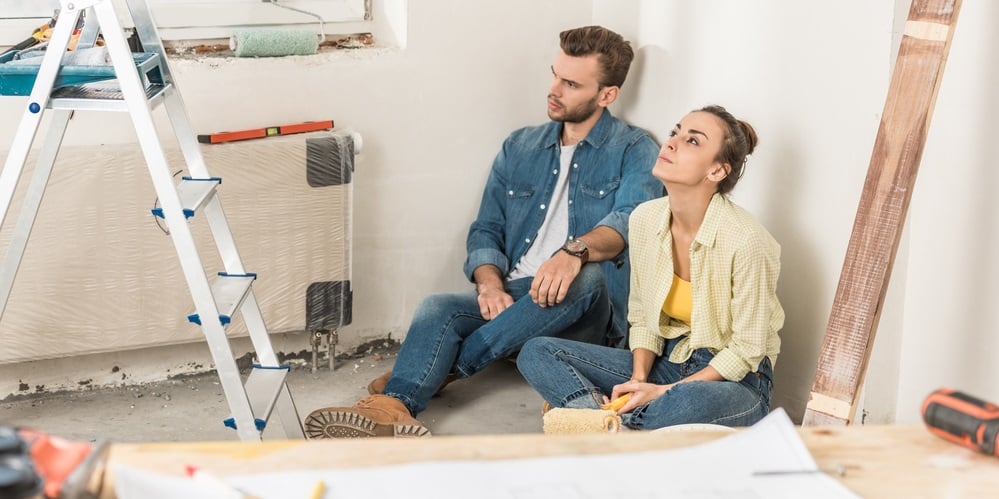
Your Options for Construction Debris Removal
As a DIY remodeler, you probably enjoy taking care of things yourself. But you shouldn't have to bother with the messy, difficult, and sometimes dangerous task of your project's construction debris removal?
Essentially, you have three options for removing the waste:
Haul it yourself
This is the most labor-intensive option. You’ll need to fill up your own vehicle with trash and drive around town to various dumps and recycling centers. You might save money unless you damage your vehicle or end up needing medical attention for an injury.
Put a dumpster on your property
This requires you to lift and carry the junk yourself, and you have to know the size and amount of debris before you begin. You probably need a special permit, too. Not a great DIY construction debris removal option for many locations because the dumpster can damage your property or the street.
Call for professional junk removal
You make the call, and a truck will show up, hopefully, with the workforce and equipment to take care of everything. With a reliable and professional firm you won't have to much of anything other than provide directions. The biggest challenge with this option is deciding who to call.
Why Junk King Is Your the Best Choice
When you bring in our professionals to handle your DIY construction debris removal, you can focus on the fun and rewarding aspects of renovating your home. You love rolling up your sleeves and getting work done, but cleaning up building debris is not fun.
Our service also lets you get the job done faster, since you don’t need to haul trash to a dumpster or spend hours driving around. As you deconstruct, open up materials, and create a bit of waste throughout the project, just stage everything to one side and we’ll come haul it away.
Junk King also offers your greenest solution for DIY construction debris removal. We recycle wood, metal, plastic and other materials with extreme efficiency. And because we pool resources and distribute junk to waste facilities efficiently, there’s less fuel burned than by individual homeowners driving around to dump sites.
Concerned about your project costs? Junk hauling can actually save you money, too. You pay us one flat fee based on the volume of trash. Save the money you would have spent on special construction waste trash bags, dumpsters, and gasoline. And save the precious cost of your free time!
The best reason to choose Junk King for your DIY construction debris removal, though, is simply how easy it is. Make an appointment and you’re done!
Schedule Junk Removal For Your Next DIY Project
Make the call to Junk King to schedule an appointment that works best for your schedule. If your project is creating large amounts of trash that get in the way, you can schedule a pickup midway through the project and again at the end. Or just wait until you’ve hammered the last nail — and we’ll show up on-time and ready to haul everything.
When you need DIY construction debris removal, remember Junk King — your easiest, fastest, simplest solution!
If you have limited resources for hauling and disposal, it makes far more sense to outsource that job. And it makes sense to give the job to qualified firms equipped and knowledgeable for handling and disposing of hazardous waste.
And even if you have the vehicles and the manpower, it can be far more advantageous to contract this type of work to waste hauling firms that are specialists.
Do you have a current or upcoming project that will need clean-up and removal? If so, call Junk King! Our team specializes in construction waste removal. We can be at your facility in mere minutes, so call us today! Our crew is fully insured and well-trained, so you can trust them to get rid of your unwanted items in a professional and courteous fashion.
One of the best things about hiring Junk King is that we recycle a much of the material we pick-up.
This is proof of our commitment to being an eco-friendly removal service. If you have questions about what we do or what we believe, give us a call at (707) 744-4254.

